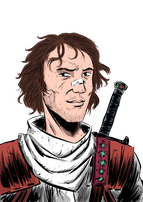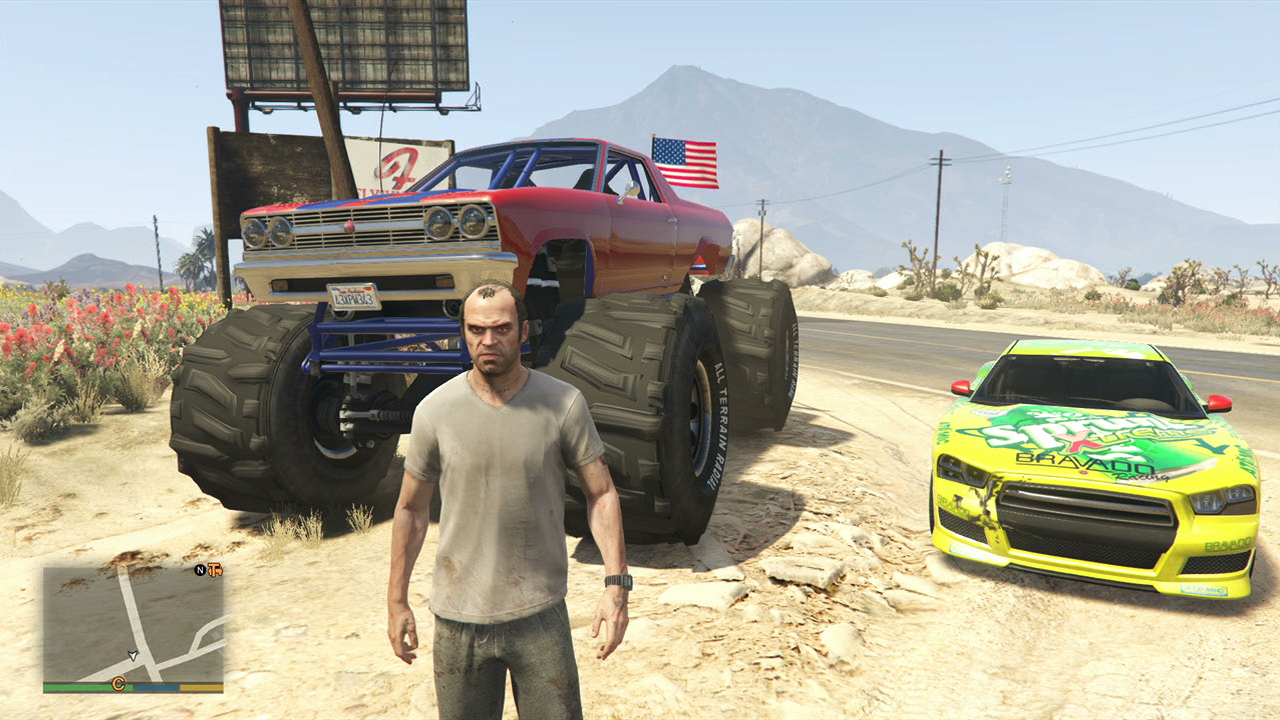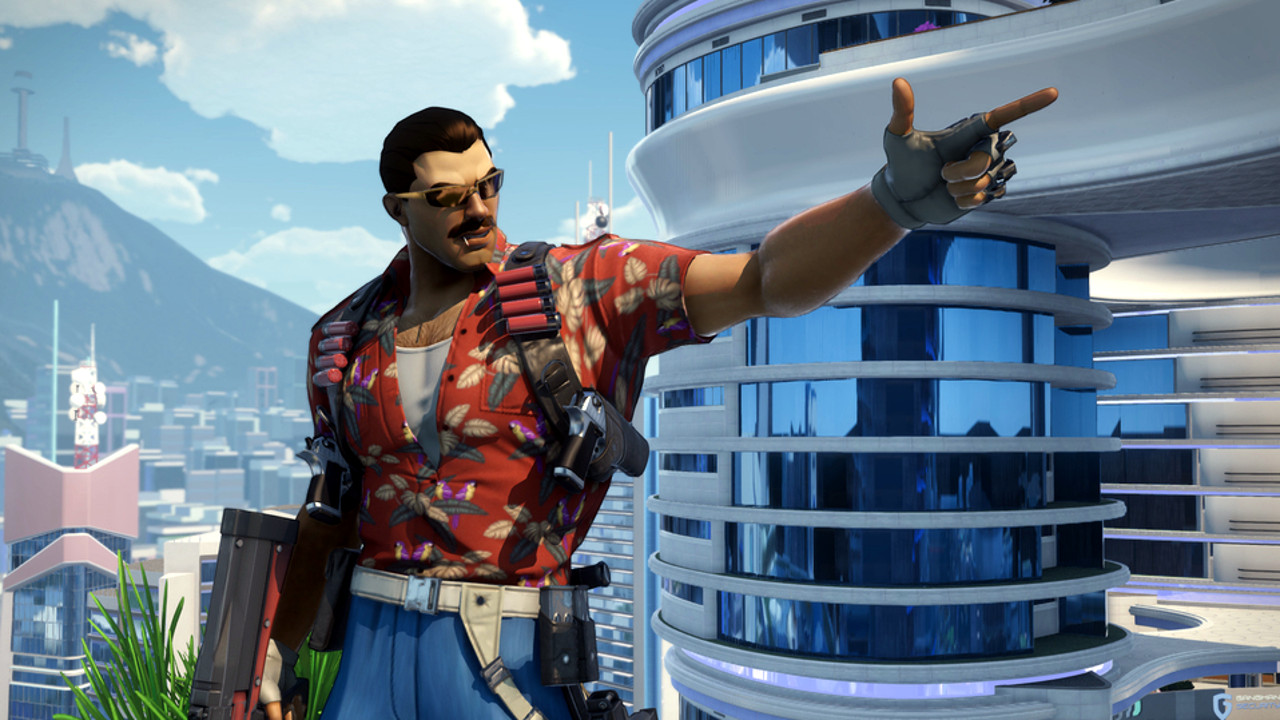"There was never anything that was meant to make a 'dig' at GTA" - the curious inside story of the Saints Row / Agents of Mayhem series
Ahead of the release of Agents of Mayhem we take a look at the eccentric open-world series that spawned it
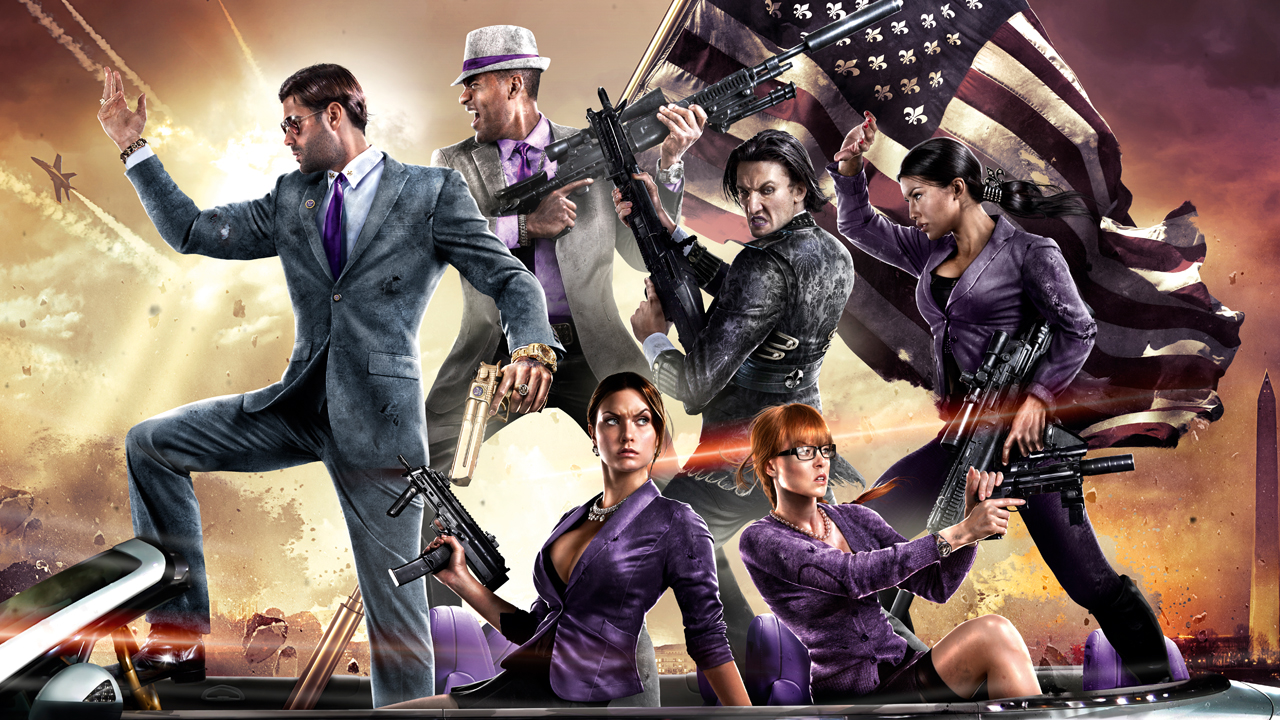
I was using superpowers to fly over a virtual simulation of a city programmed by aliens when my partner asked me what I was playing. It was Saints Row 4. “I thought Saints Row was just like GTA 5 but more gangsta?” she said. She was technically right – in 2006 when the original was released that's exactly what it was, but somehow over the following decade Saints Row altered its identity so thoroughly it's as if it visited one of its own in-game plastic surgeons. Volition created four Saints Rows so different from each other they're basically the Radiohead albums of video games. Their next game promises to be another radical reinvention: Agents of Mayhem is a spin-off starring characters who look like action figures based on a 1980s TV show.
Plenty of different people have worked on the Saints Row series, despite it always being created by the same developer. Drew Holmes got his start on it, doing quality assurance for the first game. He was then hired to write ambient NPC dialogue, radio stations, and mission dialogue on the second, and then co-wrote Saints Row: The Third with Steve Jaros. Holmes and Jaros also split writing duties on another of Volition's series, the sci-fi Red Faction games. If you've noticed similarities between the two – both share an evil corporation called Ultor, and there's a speech given at the end of Saints Row: The Third quoted directly from Red Faction – it's probably down to them. Holmes was also lead writer on a version of Saints Row 4 that was cancelled when publisher THQ, as Holmes puts it, “fell off a cliff”.
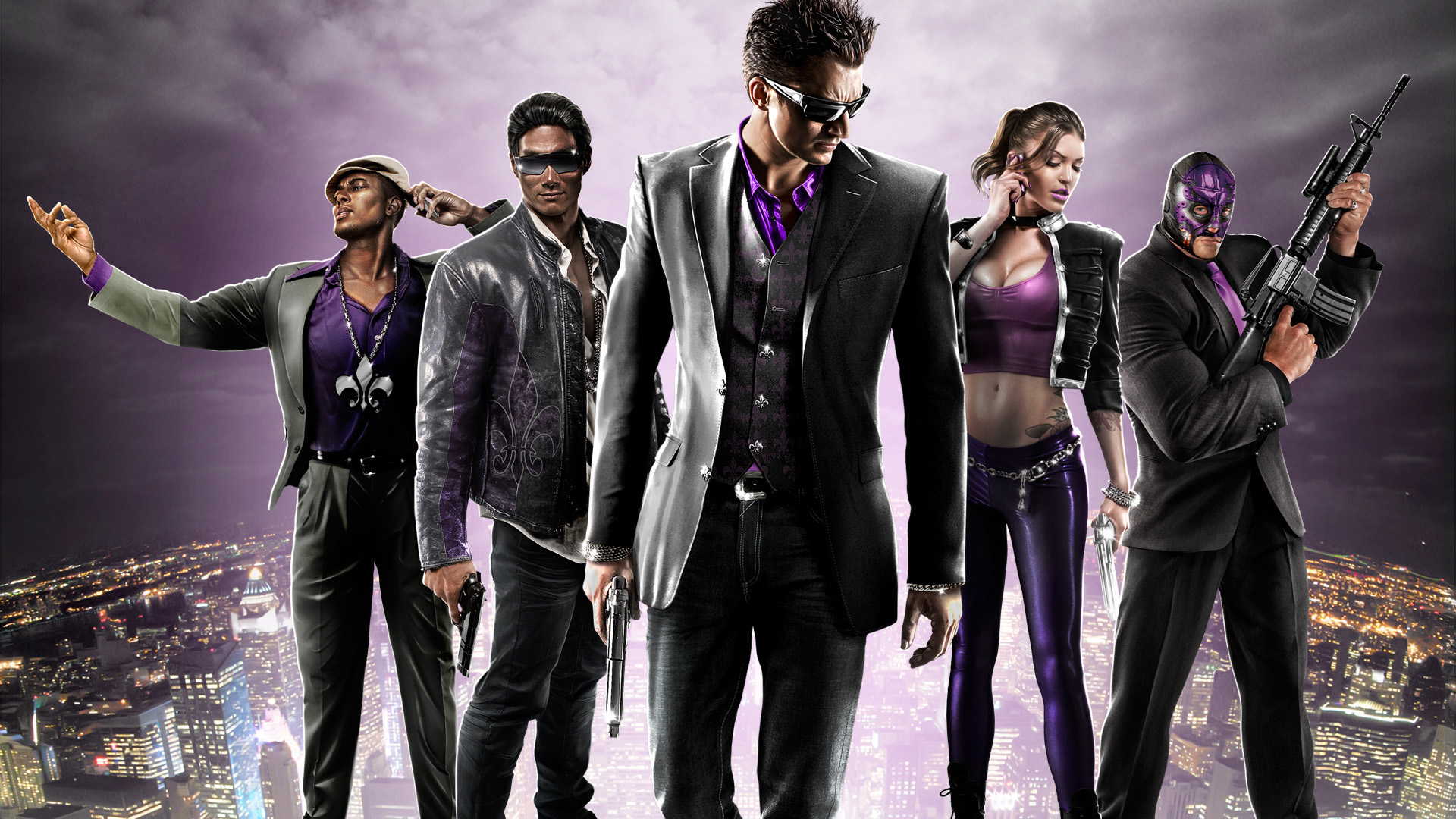
The biggest change Holmes saw during his time working on the series was the tone. “The franchise really evolved – and was allowed to evolve – into a much wackier experience with each iteration,” he says. “I think it was a way to help define what the game was. We didn't have to just ape what someone had done before, we could create something that felt fresh. Like how the Fast & Furious franchise has evolved.”
The original Saints Row (2006)
Here's where it all started. Saints Row is a sequel to Rockstar's Grand Theft Auto: San Andreas in a way that none of the later, actual GTA games are. Stilwater is a sandbox city that the Third Street Saints take over one district at a time just like the Grove Street Families do in Los Santos, and your avatar – only ever called ‘Playa’, which is genius – is customisable like CJ is. Even more so, in fact. It's not just hair and clothes you can change: ethnicity and facial features are up for grabs.
Saints Row improves on GTA in another way too: via its side-missions. There's no disconnect between the player and Playa, no side-quest in which you casually kill a dozen cops before going back to storyline missions in which you're blackmailed for the heinous crime of killing just one cop. Activities like Drug Trafficking or Insurance Fraud – in which you ragdoll into traffic for money – earn Respect, which unlocks story missions. Transitioning between the two is never jarring.
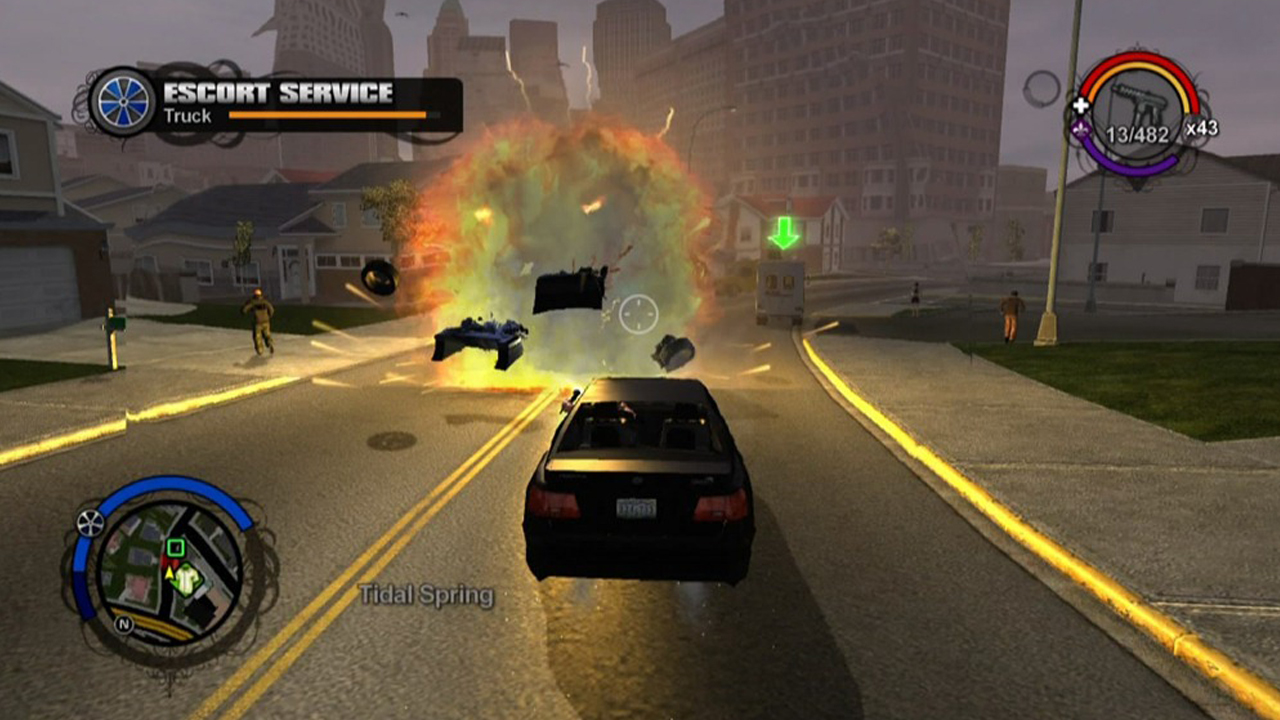
“I think any time you're working on an open world game the spectre of Rockstar is there”
Drew Holmes, Saints Row series writer
“I honestly don't understand how you don't weave the side missions with the main story,” says Holmes. “It's all a part of the same world, and the player has one meta goal for the game. If what you're doing on the side isn't in some way helping the player reach that goal then it's hard to justify why you should do it. Too often, open world games become kitchen sink games and you get sidetracked so much with nonsense that it becomes a distraction. If everything I can do in the open world in some way helps me get closer to my meta goal, then the entire experience feels cohesive.”
Though it's well-structured, it isn't always well-written. The story of a gang trying to end gang warfare by declaring war on their rivals comes across like the kind of 1990s action movie made by someone who wanted to be Quentin Tarantino but wasn't, and the main reason for its success is that it was released exclusively on Xbox 360 at a time when it didn't have much competition on that platform. Saints Row was initially planned by Volition as a PlayStation game called Bling Bling, and in the reality where it was released under that name, it probably sank like a stone.
Weekly digests, tales from the communities you love, and more
The sequel: Saints Row 2 (2008)
Fortunately, we live in the reality where Saints Row 2 was made and given a multiplatform release. While the original feels like a homage to GTA, the sequel comes off closer to parody. “I think any time you're working on an open world game the spectre of Rockstar is there,” Holmes says. “There was never anything on the development side that was meant to make a 'dig' at GTA. There was certainly a desire to take what had been done and refine it. Now, on the marketing side it's a different story. SR2 and GTA4 were launching at pretty much the same time. There was definitely a conscious choice to go at GTA 4, but it wasn't a goal of the game's development.”
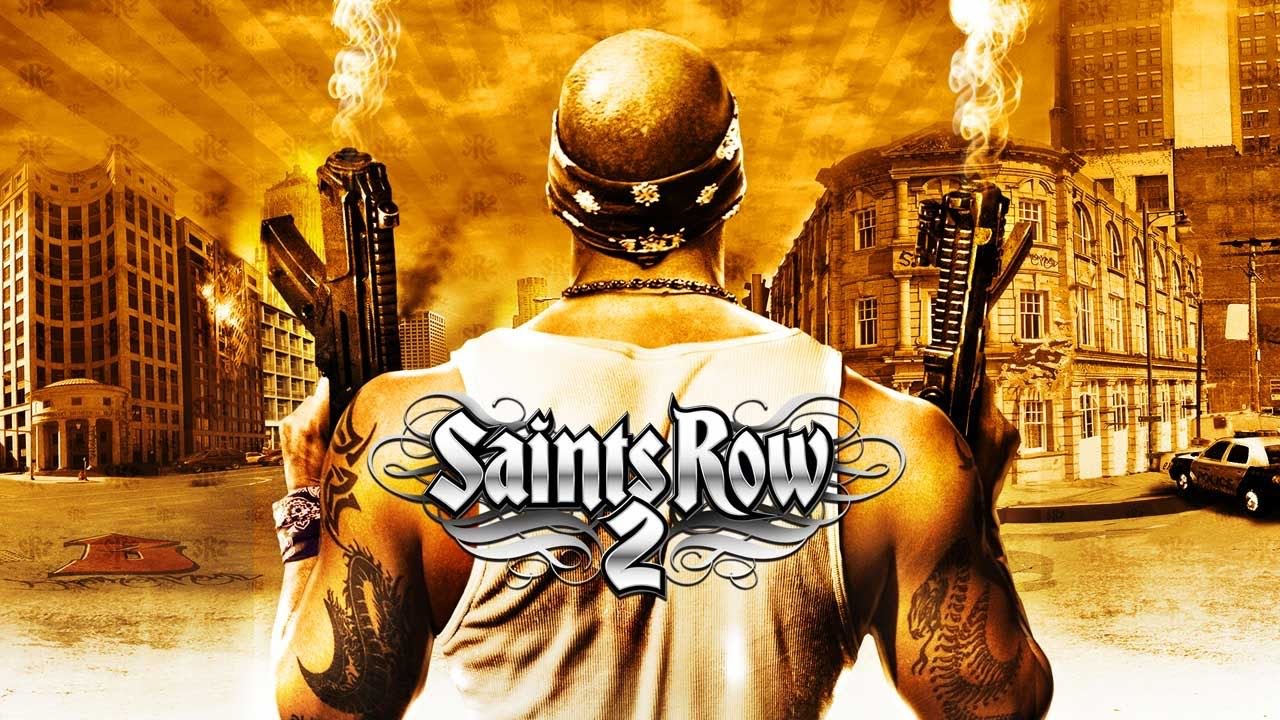
"There was definitely a conscious choice to go at GTA 4, but it wasn't a goal of the game's development"
Drew Holmes, Saints Row series writer
While the GTA series tried to turn itself into a gritty HBO crime drama, Saints Row 2 went in the opposite direction. Nothing about it is subtle. The gangs you have to take Stilwater back from this time are made up of monster truck enthusiasts and motorbike samurais, and the side activities include Septic Avenger, in which you lower property prices by spraying sewage on McMansions. Johnny Gat, one of the few returning characters from the original, goes from being a pretty tough dude to an unstoppable badass who is seen at the end of the game taking on the city's entire police force for fun.
Saints Row 2 begins with the protagonist waking from a coma. You redesign the Playa – now the Boss – with a more robust character creator, one that still puts most roleplaying games to shame. The Boss of Saints Row 2 can now be a woman, and the sliders allow for a protagonist whose age and weight are well outside the narrow norms of most games. Trips to the plastic surgeon allow mid-game redesigns from scratch, including gender-swapping. The most anyone comments on this is a running gag in which characters ask if the Boss has had a haircut.
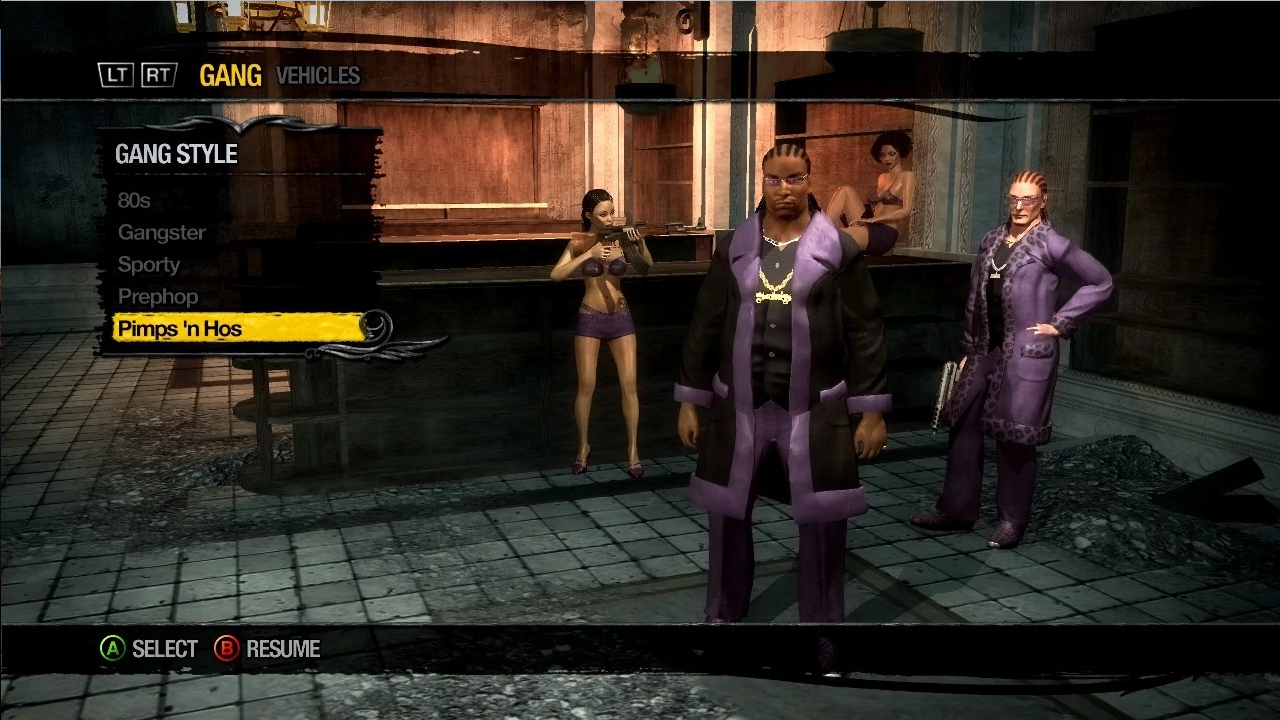
“Character customization was everything,” Holmes says. “The amount of love put in on the art/design/narrative side was staggering. It allowed people to express themselves, whether it's playing it straight down the middle or making a hideous freak because you wanted it to look ridiculous in the cinematics. It was a gift to players. We said 'if you don't want to take any of this seriously, that's your choice and we'll support you.'”
Clothing customisation in Saints Row 2 is also off the chart. The layering options allow for a long-sleeved undershirt to be visible beneath a short-sleeved shirt that in turn can be seen under a coat, all bought separately. Later games in the series simplify this absurdly detailed system, clumping items of clothing together so that each pair of shoes comes with matched socks, for instance. There are a subset of Saints Row fans still upset the later games don't let them personalise their outfits as much as they could in Saints Row 2.
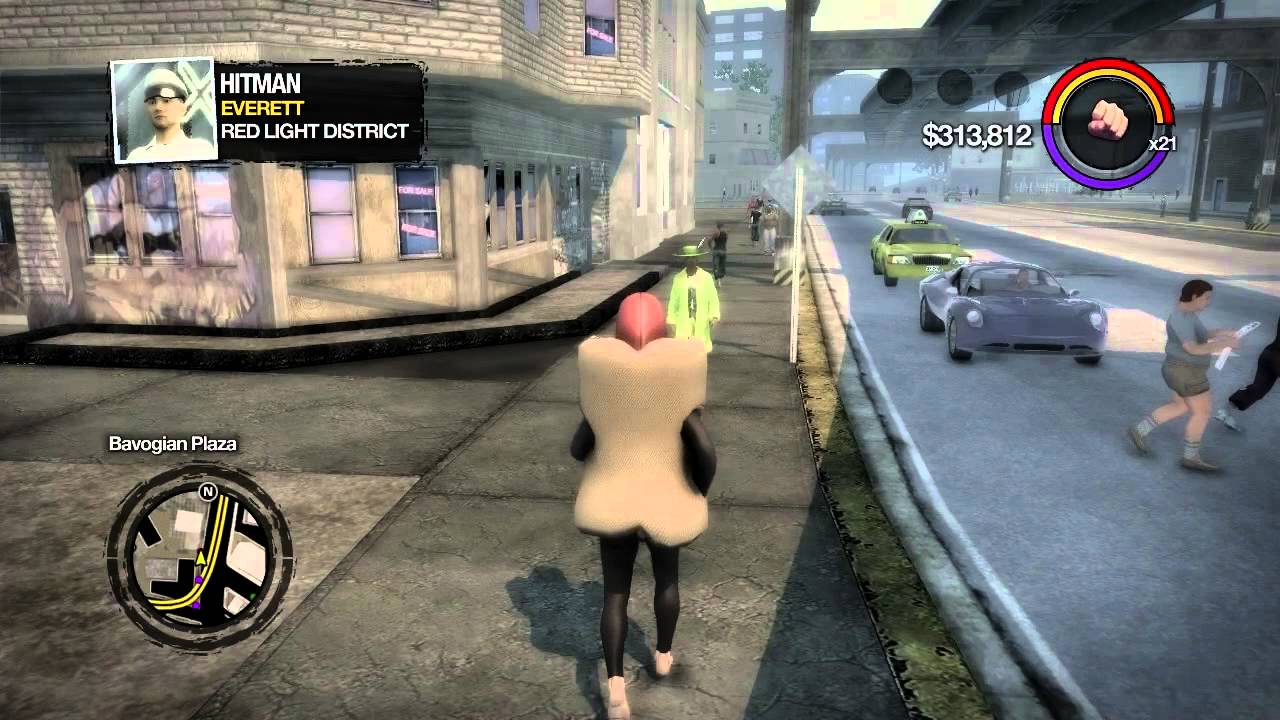
The other thing that Saints Row 2 fans love is that it hangs onto some of the initial game's grittier tone. When a young recruit named Carlos is brutalised and broken by a rival gang to such a degree that the Boss has to put him out of his misery it's jarring in the context of the over-the-top action that surrounds it – a game with slow-motion motorbike katana fighting – but it helps set up what became the theme of the series. The Boss treats Saints like Johnny Gat and new lieutenants Shaundi and Pierce as friends and is fiercely protective of them. Meanwhile, the members of the other gangs betray each other in every cutscene. It establishes that the Saints may be bad people, but their enemies are worse.
This would continue to be important. “The heart really evolved from the second and into the third with the gang members themselves,” says Holmes. “It was about a bunch of lovable sociopaths coming together as a family. And it weirdly works out.”
The three-quel: Saints Row: The Third (2011)
What separates Saints Row 2 from GTA isn't just how crazy or tongue-in-cheek it is, but how likeable its cast members are. Saints Row: The Third builds on that by focusing on its characters even more. The activities and diversions are no longer introduced by random NPCs but by the Saints themselves, giving more opportunities to spend time with them – singing along to the radio with Pierce, most memorably – and see how they've changed between games. Shaundi grows out of her ‘druggy party girl’ phase and becomes all business, while Pierce embraces his role as the public face of the Saints' legit enterprises, hawking clothes and energy drinks. Along the way the Saints have become larger-than-life public figures, ultraviolent Robin Hoods beloved by the populace.
Holmes takes issue with the word ‘likeable’, however. “I think any time you create characters the intention isn't for them to be 'likeable' because then you'll just wind up with bland and ineffective,” he says. “It's important to create characters you can empathize with. And I think over the course of the series we were able to do that. The bonding and evolution is just a natural step when you build characters with wants and needs and start to ask 'what would they do in this situation? What do they care about?'”

"I think any time you create characters the intention isn't for them to be 'likeable' because then you'll just wind up with bland and ineffective"
Drew Holmes, Saints Row series writer
While going publicly legit, the Saints remain criminals and the first mission of the game is a bank robbery. But with the color-coded gang and goofy outfits, the Saints have become a different kind of criminal – they're villains from the 1960s Batman TV show. Saints Row: The Third adopts a blatantly comic-book tone with additions like gangs of luchadores and cyberpunks, the deaths of characters everyone knows will return, zombies, and a military organization called STAG who parody Marvel's SHIELD right down to having their headquarters in an aircraft carrier.
And in its downloadable expansion 'The Trouble With Clones', Saints Row: The Third gives the Boss superpowers. After drinking an irradiated can of Saints Flow energy drink you can run faster than cars, leap medium-sized buildings, and super-punch people complete with BLAM and POW explosions. In another DLC, 'Gangstas In Space', you fight aliens – or at least actors dressed as aliens – and a final cancelled expansion, 'Enter the Dominatrix' would have been set inside a simulation. The superpowers and aliens turned out to be the groundwork for Saints Row 4, which was rebuilt on the ideas of 'Enter the Dominatrix' after an early version was cancelled.
The fourth game: Saints Row 4 (2013)
Saints Row: The Third is a game that wants to be a comic book; Saints Row 4 is a game about video games. It opens as a modern military shooter where the Saints are now famous enough that they've been recruited by the government to hunt terrorists in the Middle East like they're in Call of Duty. During the course of the story it abruptly makes the Boss the President of the USA and presents you with BioWare-style moral choices, then has aliens invade and throws in a Space Invaders remake. Later it incorporates text adventures, Streets of Rage, Mass Effect space romances, and a set of powers right out of The Incredible Hulk: Ultimate Destruction or Prototype.
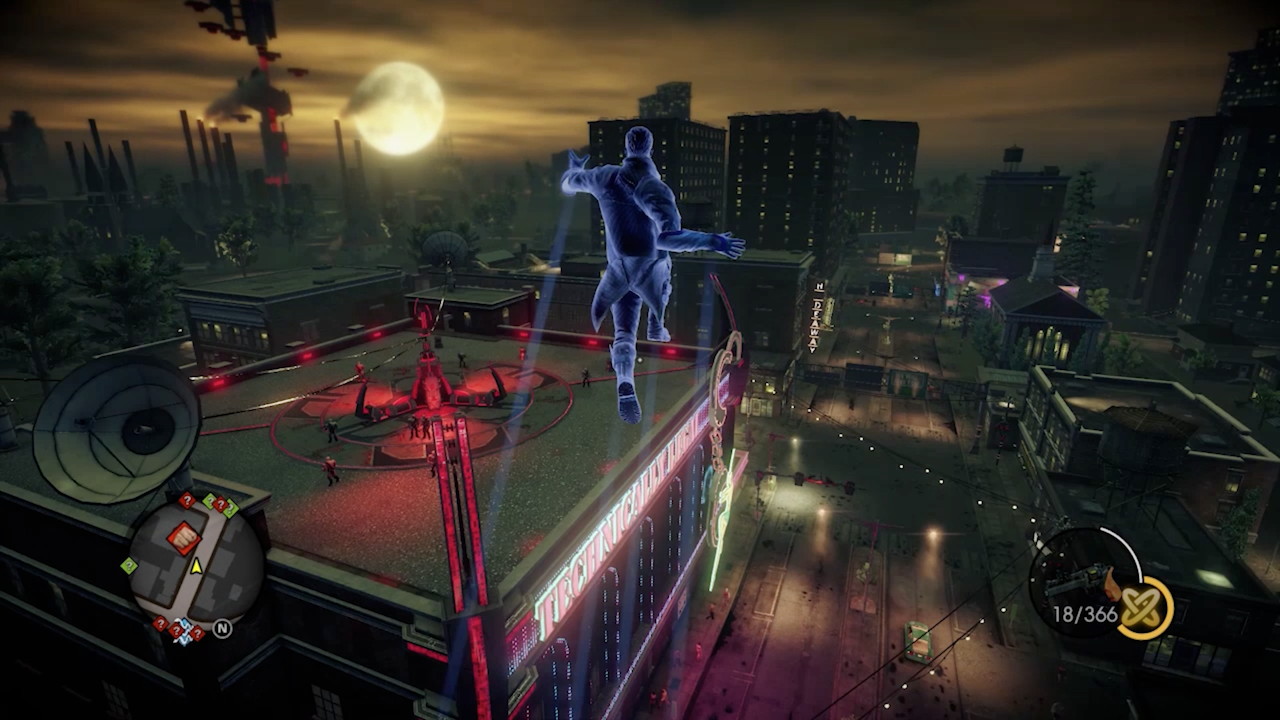
"The plan was for the gangs to be led by cloned conquerors of the past – Genghis Khan, Cleopatra, and Hitler. That would have been... well, something"
Drew Holmes, Saints Row series writer
It could have been even stranger. “For the original SR4 pitch,” Holmes explains, “the plan was for the gangs to be led by cloned conquerors of the past – Genghis Khan, Cleopatra, and Hitler. That would have been... well, something.”
Saints Row started as an ode to GTA: San Andreas, but by Saints Row 4 it became an ode to all of video games. You spend most of the story trapped in a simulated city, pushed back down to street-level as a punishment by the Earth's new alien overlord. To fight back you disrupt the simulation by damaging it, which is perhaps the ultimate way of combining mindless rampages and the plot of an open world game. In Saints Row 4 every time you smash up a street you're getting one step closer to escaping and defeating an alien invasion. And what's more video game-y than alien invasions?
It has influences wider-ranging than just games, though. Saints Row 4 is also in love with movies and television, with homages to The Matrix, Angel, The West Wing, and They Live! Keith David guest stars as himself (the Boss is canonically a big fan of Keith David and Burt Reynolds). More surprising are the quotes from literature, drawing from the likes of William Shakespeare, Edgar Allan Poe, and Jane Austen. There's an entire radio station where the alien's leader reads passages from his favorites of Earth's literary works. Saints Row 4 is an explosion at the culture factory.
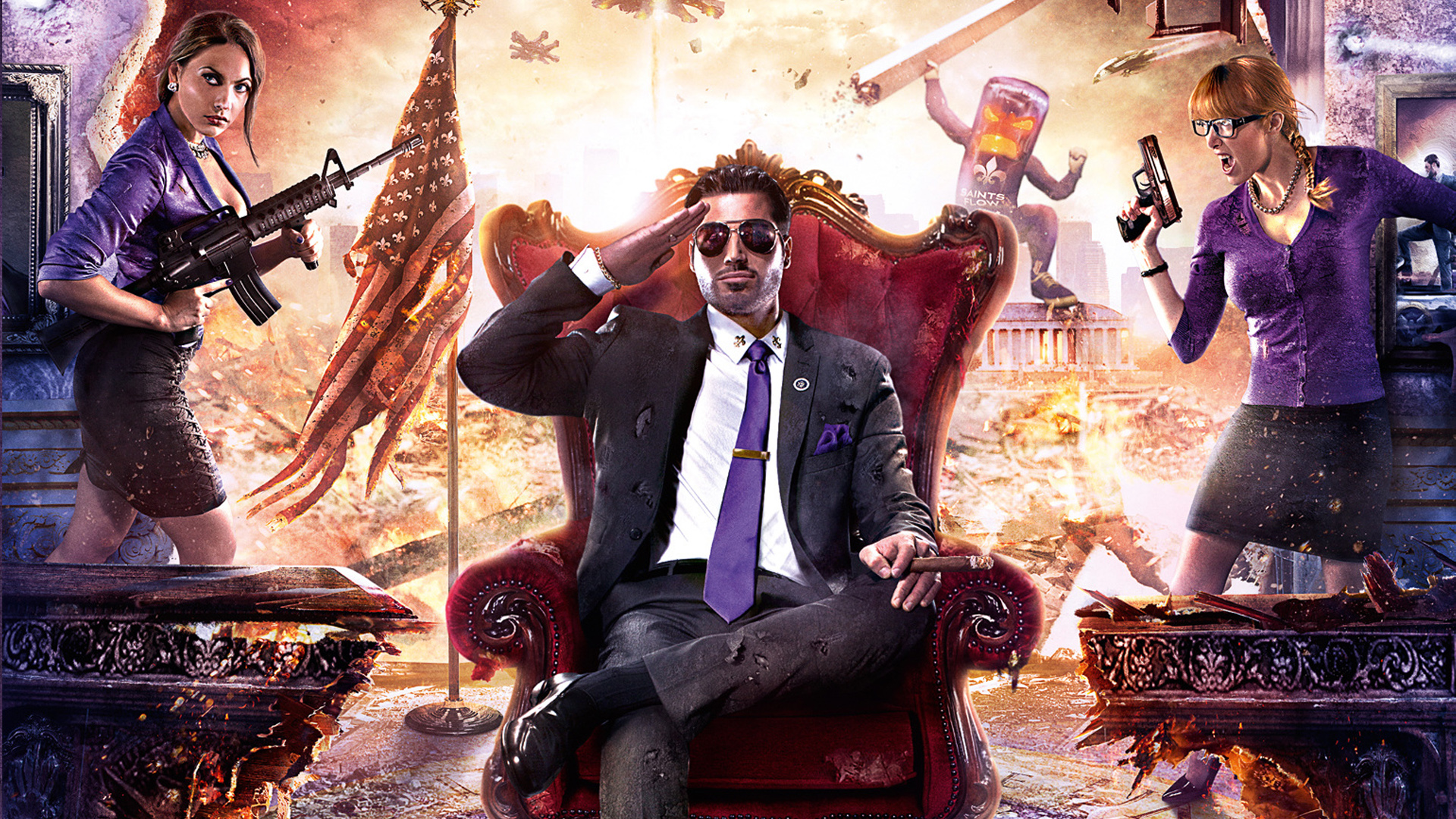
But games are its primary target, and among the games it references is its own earliest entry. While the previous two Saints Rows name-checked the occasional character from the original, those callbacks were rare. You get the sense Volition was slightly embarrassed about the series' inauspicious beginning, as well as not wanting to alienate players on PC and PlayStation who'd never seen it. But Saints Row 4 drags back everyone, even those forgotten first-game NPCs, and briefly deposits you in a simulation of the events of the original Saints Row so you can appreciate how far the series has come, from the street to the stars.
After a standalone expansion called Gat Out of Hell that is literally set in Hell and ends with Satan as the final boss, Volition's next game set in the Saints Row universe will be... um, Agents of Mayhem. Building on one of the endings of Gat Out of Hell – in which God, voiced by Nathan Fillion, agrees to reset the Earth to undo all the craziness that's happened to it over the course of the series – it stars a team of superheroes protecting a futuristic version of Seoul, South Korea.
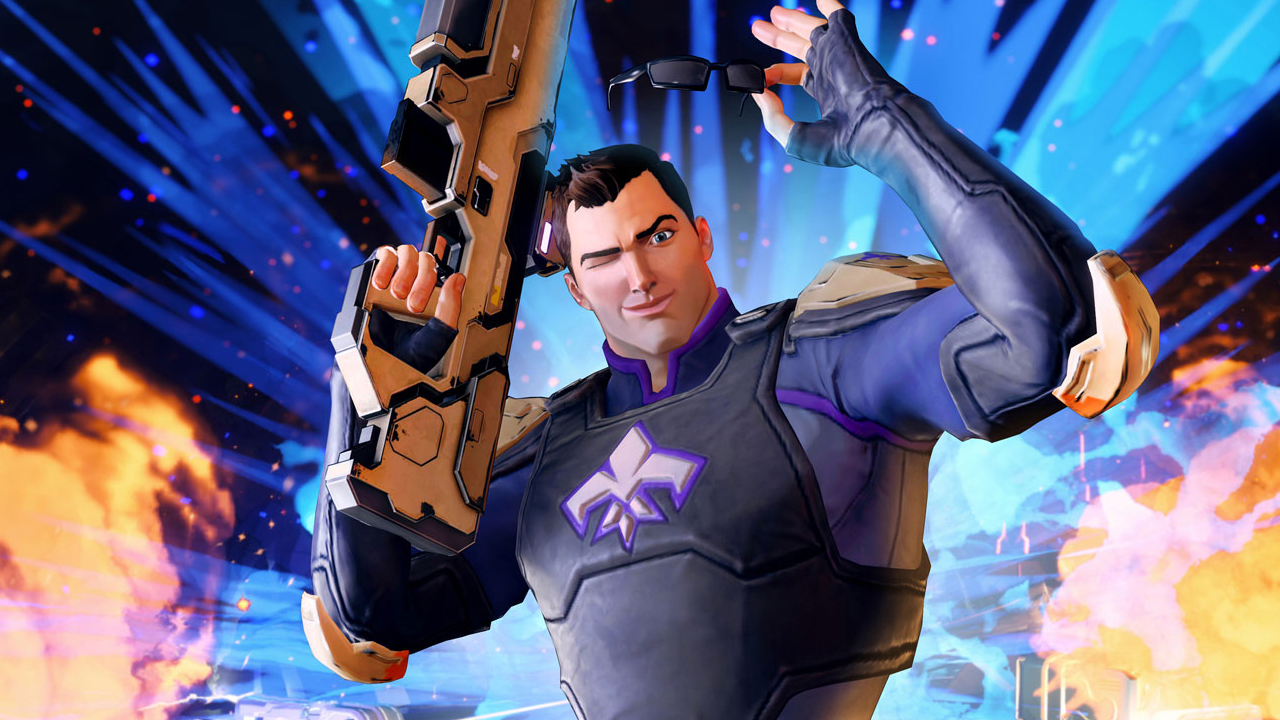
Its alternate timeline features a couple of characters from the Saints, with Pierce reappearing as a member of the superhero team called MAYHEM under the pseudonym Kingpin, and Johnny Gat (a preorder bonus) cool enough to just called Johnny Gat. This time there isn’t a customisable protagonist, and players will be able to switch between characters at will, which seems like an obvious place to go from the increasing focus on the growing ensemble cast across each new Saints Row game. It is still very much a Saints game at heart, however.
By Saints Row 4 the Boss had completed what wrestling fans call a heel-face turn, going from gangster to super-villain to saviour of the Earth, just as the series completed its ascension from a GTA-like to a sci-fi superhero comic. Agents of Mayhem begins at the place Saints Row ended, and where it will go from there is anyone’s guess. What’s certain is that it’ll be a tanker-load of fun finding out.
Agents of Mayhem releases worldwide on 15 August.
